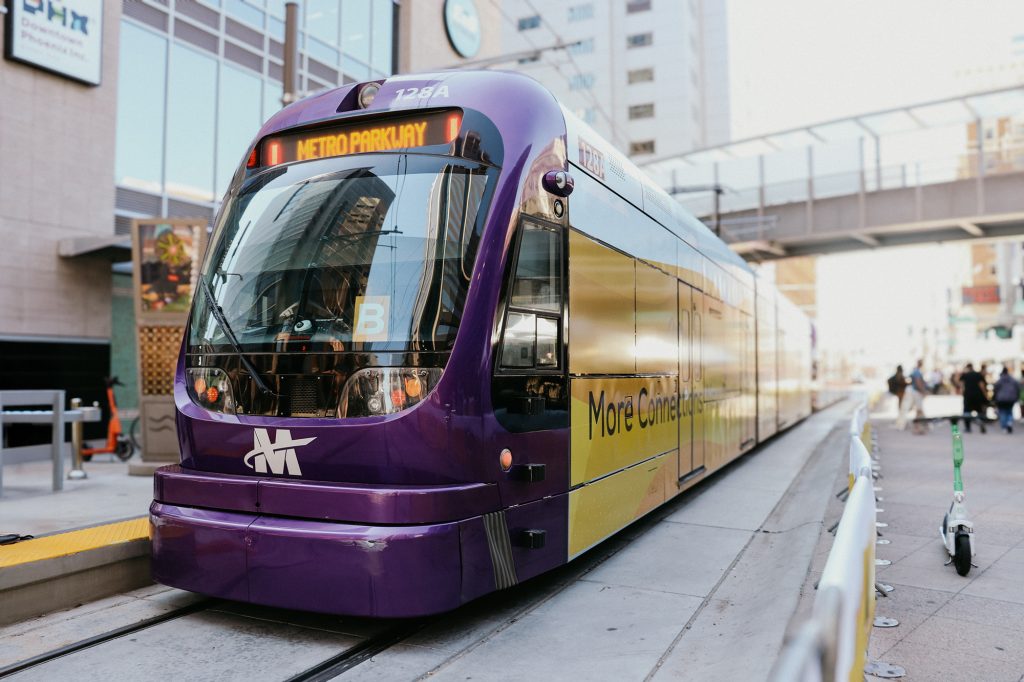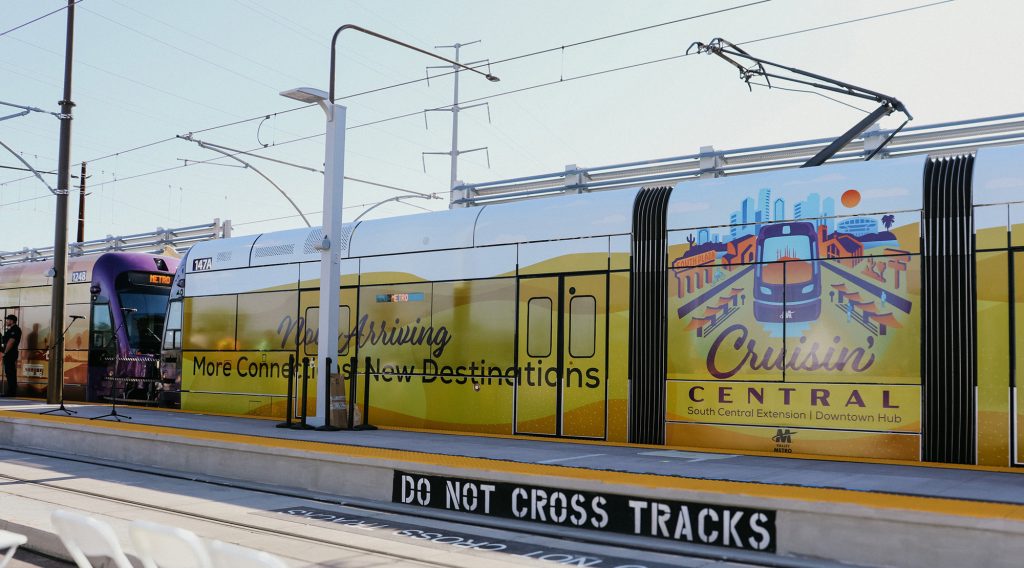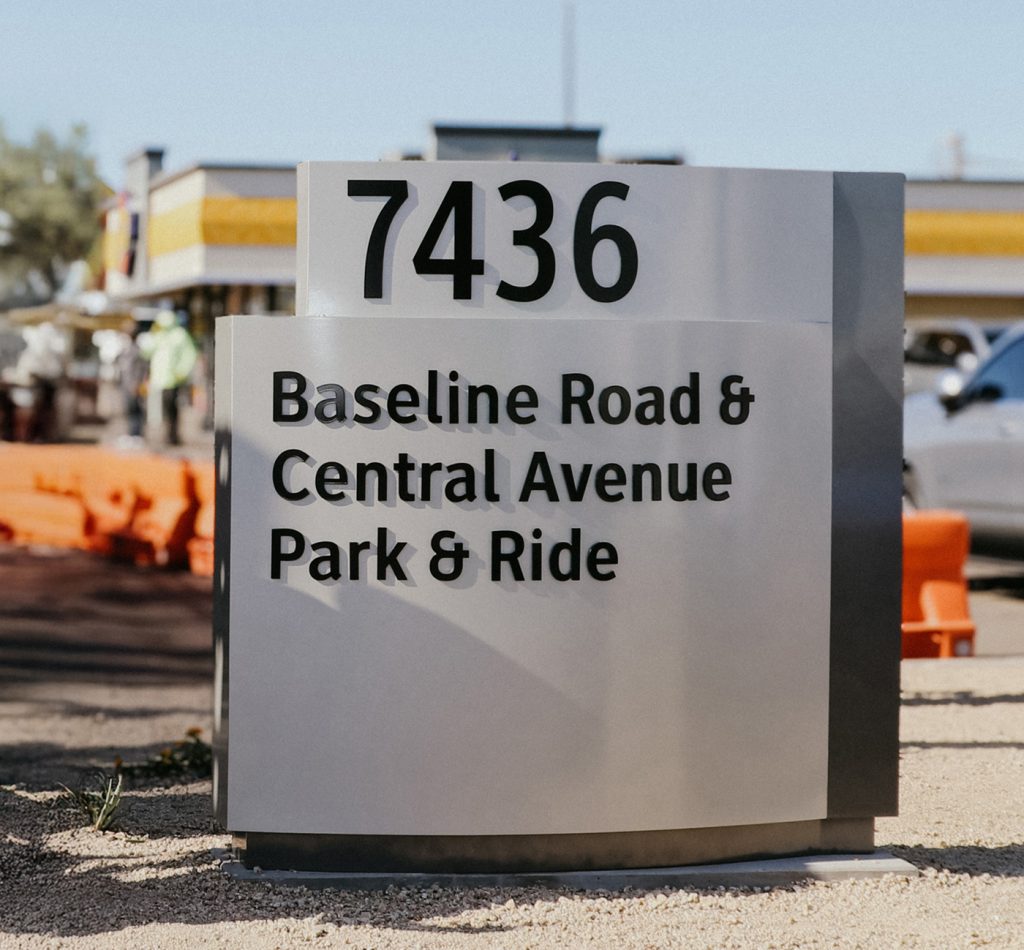Meeting a Mega Project’s Mega Challenges: Valley Metro’s South Central Extension / Downtown Hub
By Christopher A. Miller, PMP | 7/14/2025
CHRISTOPHER A. MILLER, PMP
Vice President, Corporate Content
Hill International, Inc.

June 7 marked a momentous day for Valley Metro Rail and the City of Phoenix, AZ, as they celebrated the opening of the South Central Extension/Downtown Hub (SCE/DH).
The SCE/DH is a 5.5-mile light rail extension connecting downtown with south Phoenix along Central and 1st Avenues. Featuring eight stations, a 110-space park-and-ride facility at Baseline Road, more than 550 new trees and desert landscaping, 18 art installations, and comprehensive utility upgrades, the project transforms a historically underserved area of the city and connects the community to educational, economic, and cultural opportunities across the region. Other project features include more than 20 flared intersections, major bridge work over the Salt River, two roundabouts, and a new downtown hub interfacing with existing light rail tracks at four locations.
Over the course of delivery, the $1.34 billion extension faced numerous challenges, including impacts of COVID-19, unexpected utility conflicts, blackout windows related to Super Bowl LVII, stakeholder concerns along the route, and significant coordination with the installation and integration of new light rail infrastructure interfacing the existing light rail system in downtown Phoenix.
The key to delivering SCE/DH, despite these challenges, was a can-do mindset shared by Valley Metro’s internal project team, CM-at-Risk Kiewit, and project/construction manager Hill International.
SCE/DH Trackwork Inspector Alejandro Medinilla, who was part of the Hill PM/CM team, said the extension is the kind of transformative transit infrastructure that can enhance a community far beyond its function. “This new line integrates south Phoenix with the rest of city, and that means a great deal for the families of this community,” he said.

Beyond the impacts of COVID and the Super Bowl, the SCE/DH project also faced coordination and staging challenges. Medinilla continues: “There were dozens of utilities involved and an incredible amount of underground work—both to make utility enhancements and to prep the ground to support the new track. The upshot, though, is that all this utility work means much improved service for south Phoenix, as utilities upgraded their own infrastructure during construction.”
Medinilla added that constructing track capable of withstanding the desert heat for decades to come was an involved process. “We worked hand-in-hand with Kiewit to make sure the track would be able to handle the thermal environment,” Medinilla said. “If the air temperature hits 117 degrees, the rail can easily hit 150 degrees and more, and metal of course expands in that heat.”
To manage this challenge, Medinilla explained, the design established a ‘rail neutral’ temperature suited to Arizona’s temperature spectrum, dictating when the rail is welded and embedded in concrete or fastened to the plinths. Expansion joints were also included to isolate fixed structures such as the Salt River Bridge, and destressing locations were carefully documented during track construction. “Together with other key specifications, Medinilla continued, “these measures control rail expansion along the alignment and support long-term system reliability, even in the harshest conditions.”
Another major technical achievement was the illumination of the LRT bridge over the Salt River. The new feature creates a visual connection between downtown and south Phoenix. Phoenix Mayor Kate Gallego specifically cited the bridge as a point of pride: “The new programmable lighting on the Central Avenue bridge will help us celebrate sports championships, holidays, and other local events that foster city pride. I also hope that Phoenix residents will want to integrate this beautiful new landmark in their graduation or wedding photos.”

Finally, stakeholder coordination—especially for local business owners along the route—was a key concern for Valley Metro and the delivery team from start to finish. “This project took a long time, and we understandably had stakeholders who were unhappy with project progress,” said Medinilla. “At the end of the day, you have to put yourself in their shoes and be empathetic and understanding that construction is impacting their business and accommodate their needs—keeping a driveway open, cleaning up, whatever.”
An example of this approach in action was the team’s help expediting communications work impacting the Rise & Shine Academy preschool, located along the alignment. After clearing the request with Valley Metro, Senior Office Engineer Michael Vespucci reached out directly to the provider to solve the impasse, which had dragged on for months. Following Vespucci’s call, Rise & Shine’s issues were addressed within a week.
Valley Metro will now be able to take both the managerial and the best technical practices and lessons learned from the SCE/DH project and apply them to their next expansion projects: the Capitol and I-10 West light rail extensions, which are now in planning and design phases.
“Closing out mega-projects is always something to celebrate,” said Gavin Martin, Hill vice president, rail and transit sector, who helped to deliver the SCE/DH as the PM/CM program manager. “There are many folks who were on this project for four, five, or more years. Early mornings, late nights, making sure that this gets done. This was an amazing project, and it took an amazing team to get it done.”